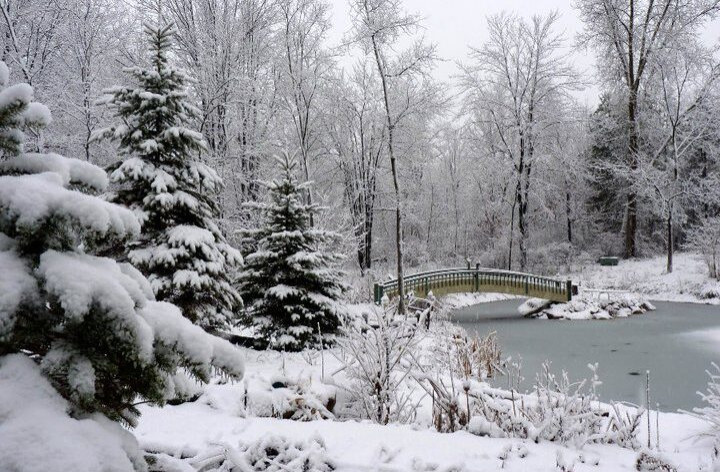The Winter Garden with Plants, Animal Tracks and Snow.

The Magic of a Winter Garden
When planning a garden, do you think about what it will look like in winter? Though a landscape that is striking in all seasons depends on the confluence of a stately design, interesting hard scape, and thoughtful choices of plant material, I would venture to say that ornaments in the landscape plays an especially vital role in our winter. The plants are welcome to be the star of the show every season of the year, as they should be. The walkways, driveways, and terraces facilitate flow, and provide places for
people to be a part of it all.
The winter season is long in Southern New York and Connecticut as most of us know, so it makes sense to plan our garden’s needs ‘good bones,’ which are pleasing shapes and structure that remain once the leaves fall and flowers fade. This includes things such as trees, shrubs, and manufactured structures.
All the deciduous plants sulk in the advancing cold, shed their leaves, and go dormant for the winter. The trees stand firm and skeletal in the winter; the trunks and branches are indeed very sculptural. The branchy remains of shrubs and perennials rattle in the wind. This seasonal plant sculpture is not by choice. A gardener might say there is no meat in this scene. The evergreens are indeed green, but they can have a stiff and stoic look in their glazed over and embattled winter state, quite unlike their lively spring to fall life.
There is something very magical about snow. I think, for me, it is the stillness of the snow and the fact that it can cover up so much. As the snow delicately falls, or as you wake up to a six″ of beautiful
snow in the morning, all evidence of human debris, damage, and destruction are melted away. The world becomes untouched once again. Certain kinds of snows “stick;” they stick to the trees, to the bushes, and make the landscape an incredible wonderland.
This winter wonderland greets me in cool whites and blues; a delicate dusting of snow on every branch, dried grass, and covering the neighborhood ponds. An early walk into the forest leaving nothing
but my footprints behind. Tracks in the snow can tell you what kinds of animals
are around. Familiar mammals, like squirrels and rabbits, but many tracks are of mammals that only come out at night or are very secretive. I can see where small birds, juncos, and sparrows, have been hopping over the snow visiting all the grass heads poking up above the surface and eating the seeds they find there.
You can see where a mouse (or vole – I cannot tell one small mammal from another by the tracks) has come above the snow to scamper over to his next tunnel… Others have been here before me–animal tracks in the snow. These secret animal pathways are invisible to us most of the year, but the snow
brings them forth.
Winter landscapes do not have to be drab. While colorful flowers may have faded and deciduous trees’ branches are bare, there are still plenty of ways to bring your yard and gardens to life in winter. You just must know what to plant.
From a design perspective, winter interest usually comes down to three factors: color, texture, and contrast.
If you need help curating your winter landscape, reach out!
Our lead designer, Peter Atkins and Mary Ann, would be happy to assist you in designing a
plant palette that is tailored to landscape. Keep in mind that our spring landscape design/install calendar fills up quickly, so now is a suitable time to secure your spot on the calendar.
Looking forward to hearing from you
Peter Atkins and Mary Ann Henry